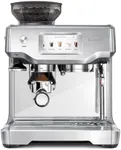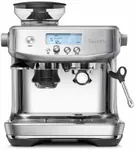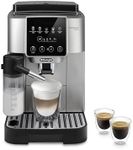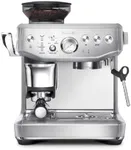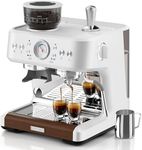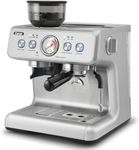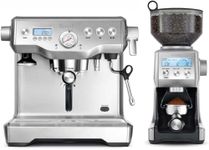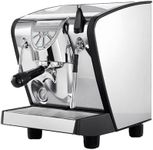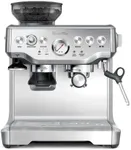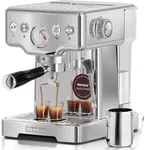Buying Guide for the Best Double Boiler Espresso Machines
Choosing the right double boiler espresso machine can significantly enhance your coffee-making experience. Double boiler machines are designed to allow you to brew espresso and steam milk simultaneously, which is a great advantage for making lattes and cappuccinos. When selecting a double boiler espresso machine, it's important to consider several key specifications to ensure you get the best fit for your needs. Here are the main specs to look at and how to navigate them.Boiler MaterialThe boiler material in an espresso machine affects the durability, heat retention, and overall performance. Common materials include stainless steel, brass, and copper. Stainless steel is known for its durability and resistance to corrosion, making it a popular choice. Brass and copper are excellent for heat retention and stability, which can lead to more consistent espresso shots. If you prioritize longevity and ease of maintenance, stainless steel might be the best choice. For those who value temperature stability and performance, brass or copper could be more suitable.
Boiler SizeBoiler size determines the amount of water the machine can heat at one time, which impacts how many drinks you can make consecutively without waiting for the machine to reheat. Larger boilers are ideal for making multiple drinks in a row, making them suitable for households with multiple coffee drinkers or for entertaining guests. Smaller boilers are sufficient for single users or those who make one or two drinks at a time. Consider your typical usage to decide on the appropriate boiler size.
Pump TypeThe pump type in an espresso machine affects the pressure and consistency of the espresso extraction. There are two main types: vibratory pumps and rotary pumps. Vibratory pumps are smaller, less expensive, and commonly found in home machines. They can be a bit noisier but are perfectly adequate for most home users. Rotary pumps are quieter, more durable, and provide more consistent pressure, making them ideal for those who want a more professional-grade machine. If you value a quieter operation and plan to use the machine frequently, a rotary pump might be worth the investment.
Temperature ControlTemperature control is crucial for achieving the perfect espresso shot, as different coffee beans require different brewing temperatures. Some machines offer PID (Proportional-Integral-Derivative) controllers, which provide precise temperature control and stability. Machines without PID controllers may have less consistent temperature regulation. If you are a coffee enthusiast who enjoys experimenting with different beans and flavors, a machine with a PID controller will give you the flexibility and precision you need. For more casual users, a machine with basic temperature control may suffice.
Steam WandThe steam wand is used to froth milk for lattes and cappuccinos. The quality and design of the steam wand can affect the texture and quality of the milk froth. Some machines come with professional-grade steam wands that allow for better control and produce finer microfoam, which is ideal for latte art. Others may have simpler wands that are easier to use but may not produce the same quality of froth. If you enjoy making milk-based drinks and want to perfect your frothing technique, look for a machine with a high-quality steam wand. For those who primarily drink espresso, the steam wand may be less of a priority.
Build QualityBuild quality refers to the overall construction and materials used in the espresso machine. Higher build quality often means better durability and longevity. Machines made with high-quality materials like stainless steel and brass tend to last longer and perform more consistently over time. If you plan to use your machine frequently and want it to last for many years, investing in a machine with superior build quality is advisable. For occasional users, a machine with moderate build quality may be sufficient.
Ease of UseEase of use encompasses the user interface, the complexity of the controls, and the overall user experience. Some machines come with intuitive controls and digital displays that make it easy to adjust settings and monitor the brewing process. Others may have more manual controls that require a bit of a learning curve. If you are new to making espresso or prefer a straightforward experience, look for a machine with user-friendly features. Experienced baristas might enjoy the challenge and control offered by more manual machines.
